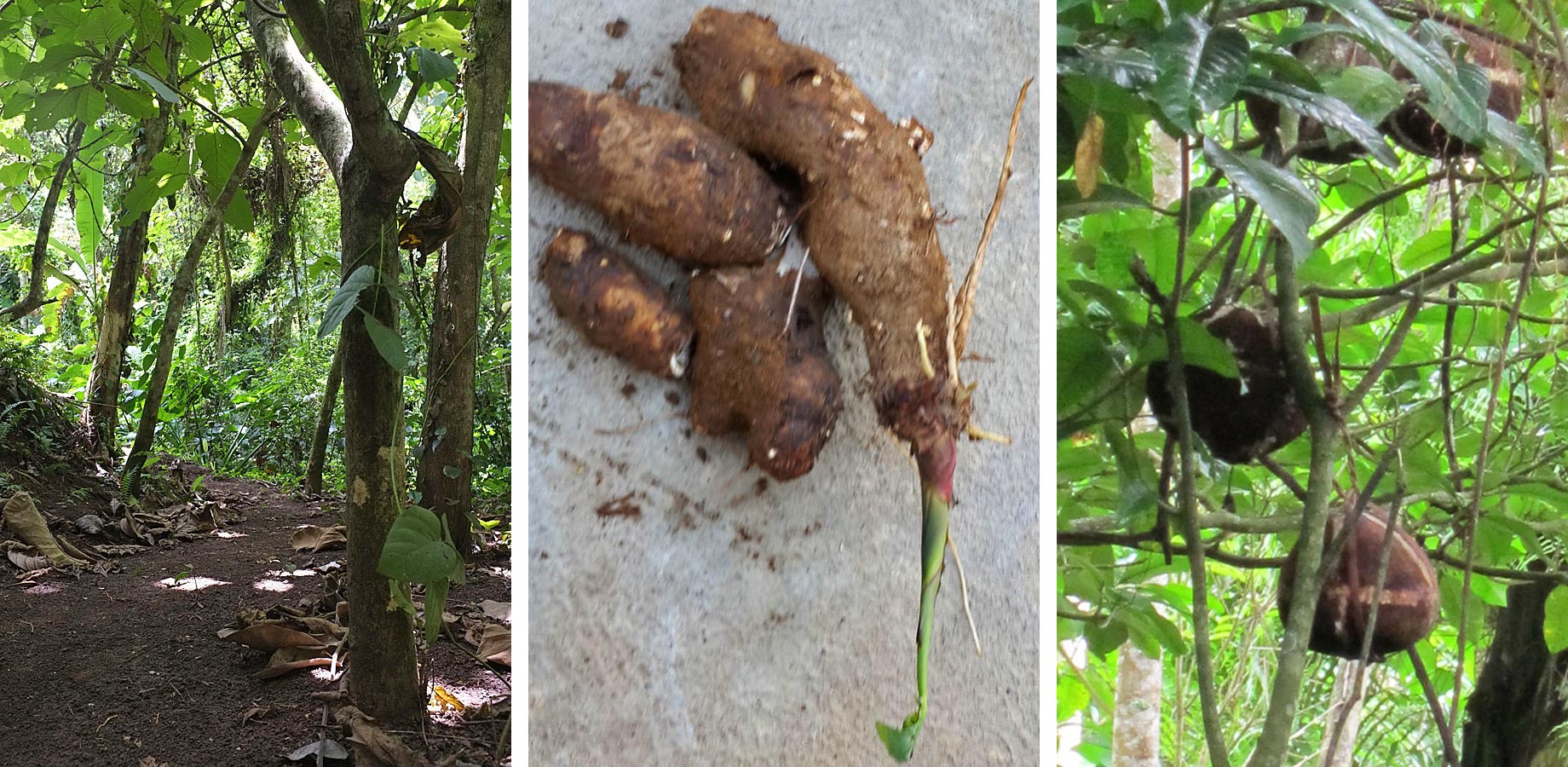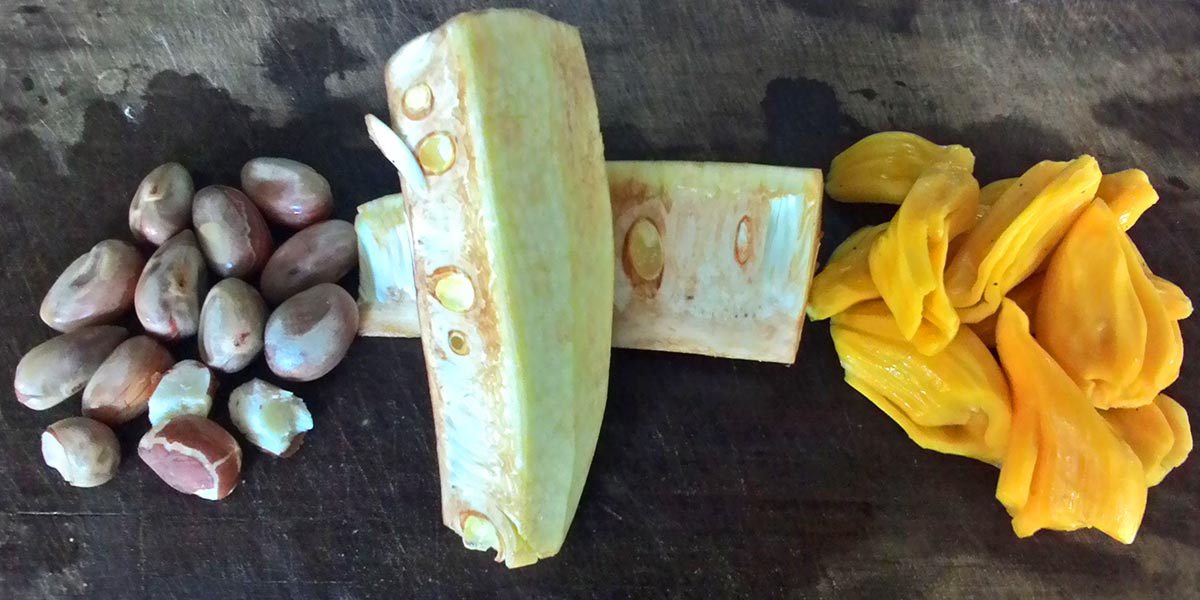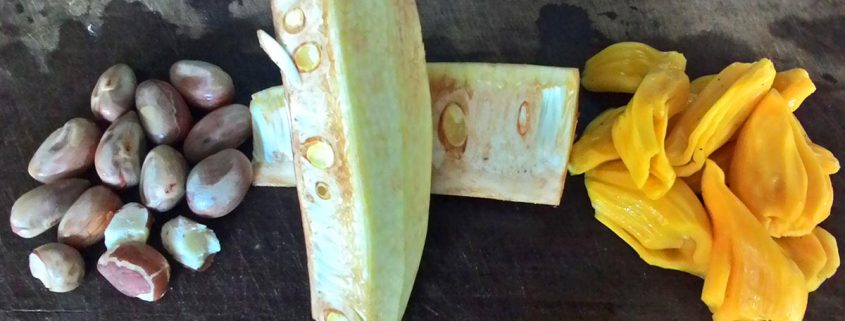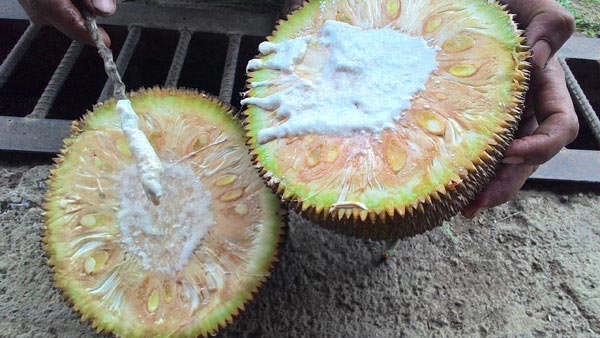Foods that Save the Forest

It’s hard for us to imagine that not just oil and gas, but soil and water are now precious resources under threat. We do, in fact, have the power to turn this around in every choice we make.
Where did it go wrong?
Philosophy and Intro
When European explorers first stepped into the tropical rain forests of South America and Asia, including Bali, they were quick to judge what they observed. A bunch of primitive people, no machinery, poor soil and no crops in sight. “We’ve got to show these poor hungry people how it’s done back home”. A few decades later, most of the world’s precious rain forest had been destroyed and the people who appeared to be hungry back then actually became hungrier today. Where did we go wrong?
First of all we must acknowledge the wisdom of the tribes who have lived in harmony with the rain forest for thousands of years. Of course there was plenty of food, barely visible to the untrained European eye, hidden in the healthy and self sustaining food forests which those tribes created in complete harmony with Mother Nature. No bags of artificial fertilizer or pesticides in sight. You couldn’t cross these forests without sweet tropical fruits throwing themselves at your stomach. But yet, westerners consider these people to be poor and need help.??? The soil in most parts of the rain forest is indeed ‘poor’ in any as most of the nutrition for the lush vegetation is actually in the leaves. Whilst European soils enjoy a lengthy ‘rest period’ from late autumn until spring, in which the soil regenerates, tropical soils are continually fed through a complex composting system managed by soil microbes, bacteria, fungi and creatures such as ants, termites and to a lesser extent, earth worms. The typical bare soil, annual crop, mono culture of cooler climates is therefore completely inappropriate and unsustainable in the tropics. Little did we know? Or should I say, little DO we know.
Slash and burn! This is what we shout even today as vast areas of rain forest are being cleared of precious timber before being burned to the ground to grow soy beans and corn to feed chickens in cages. Those chickens are shaped into nuggets or breaded with a certain colonel’s secret bread crumb recipe and fried in palm oil (more slash and burn agri-methods to make way for palm trees). Added to the ‘slash and burn’ are years of mono culture cropping and the destruction of all soil life through application of artificial fertilizer, pesticides and vigorous tilling. Local wildlife, rivers and ponds are weakened and killed, dragging whole communities with them. As the heavy rains hit the bare grounds precious top soil gets washed into the river causing even more pollution. When even corn refuses to grow any longer the next plot of land is grabbed and so on and so on. Soon all will be dead, dependent on artificial elements. This is a ‘dis-evolving’ process, completely disregarding and disrespecting thousands of years of patient growth to become the delicate system it is.
A leading edge of western society is warming to the idea of ‘fair trade’ or ‘rain forest alliance’ certified produce. As much as I applaud awareness and efforts to ward semi ethical produce, perhaps it’s time to take a leap and question our food choices at ground level, at soil level. It’s hard for us to imagine that not just oil and gas but soil and water are now precious resources under threat. We do, in fact, have the power to turn this around in every choice we make. Stay in touch on this page for more words, pics, videos about different foods that I have come to love and appreciate for the way they grow, taste and nourish our beings and beyond. These foods don’t need to be marketed as super foods and shipped all over the world. They need to be celebrated, straight from the earth!
As a chef in the tropics I have a daily responsibility of feeding a ‘health aware crowd’ of up to 40 wonderful individuals at Bali Silent Retreat. The choices I make impact amounts of life forms including the Balinese communities who have stolen my heart. I am therefore making it a mission to see our kitchen, just like any other part of our retreat, as a center of loving kindness that ripples out to all on the island of Bali and beyond, with waves of health and well being. No less! I am always happy to explain to you how we do this. Since you are reading this, you are an important part of the wave and I smile at the thought of us sharing our wisdom before you return home. Every Sunday we get together and feast on food-for-thought philosophies. The more aware we become the more likely we are going to make choices which benefit humanity’s rapid evolution. I couldn’t think of anything more delicious.
Article #1: THE MIGHTY MISS JACK FRUIT with video and recipe

Some say that the mighty Jack fruit tree is capable of producing more food per square meter than any other plant or tree in the world. True or not, the Artocarpus Heteriphyllus is a gentle giant to be loved and nourished. Archeological findings indicate this jewel was cultivated in Southern India perhaps up to 6000 years ago. How is the brave Jack going to save the forest?
As often the case with plants and animals, Jack trees are only beneficial in their native environments of India, South East Asia, and are abundant in Bali. They are an invasive species in South America where they have been found to disturb the precious balance of the rain forest. Having said that, trees play an important role anywhere in the world as they host a range of beneficial organisms and interact with the planet as a whole in many ways still unknown to agricultural research. A tree’s deep roots are able to draw nutrients from deep down, bringing benefit to the surface for countless other species and trees around her. She’s a host and sanctuary to insects, birds and small mammals, holding the soil in place when the rains hit, preventing erosion. Trees are huggable; day and night whether they suffer headaches or mood swings they will never reject your gesture of love. Everyone should date a tree or 2 and feast on their sweet and juicy fruits.
Throughout the year Jack will produce flowers on her trunk, the spiky ones will turn into fruits weighing up to 40 kilos, easily the biggest tree fruit on the planet. The other flowers can be used as a medicine to aid Bali Belly, or Delhi Belly. In other words, whenever you see a friend frequenting a restroom for lengthy periods of time accompanied by distressed facial expressions, send them to Jack and they will always come back.
The fruit is delicious; when it’s young it can be peeled and cooked in chunks to create a delicious curry. Its stringiness is reminiscent of slow braised pork. The ripe fruit sports floral aromas not unlike banana, pineapple and mango. A real treat! The seeds are great too, once boiled and the slimy outer layer removed. What’s left is a tropical chestnut, high in protein and quite delicious with a sprinkle of sea salt.
The wood of the tree is used in Indonesia to build some of the mystical gamelan instruments, Jack can be heard as well as tasted! Jack goes spiritual as South Asian monks dye their robes with its heart wood. We love you Jack, you made us hungry:
Recipe Time! Jack fruit Curry (Kare Nangka)
This is a great dish for people living in the tropics. All the ingredients are easy to find in the forest, as well as, at the local produce market. Get your hands on a medium sized young Jack fruit (about 5 to 8 kilos). (‘nangka muda’ in indonesia and Malasyia. Don’t use the ripe ones for this dish).
Rub your hands and knife with a little coconut oil. You will soon find out why.
- Cut the fruit in half.
- Now pause!
- Jack will start bleeding white sticky tears of joy.
- Give her 5 minutes to process.
- Notice how the oil protects your hands and knife from these tears?
- In the mean time, find yourself a thin stick. Using the stick, roll the white tears around the tip as though you are making fairy floss.
- Bonus! You just made yourself a hunting tool with super-glue.
- Burn the white tears on the tip of your stick to make it extra glue like.
- Now use this stick to catch dragon flies for dessert. (optional)
Back to your curry: Peel and cut the Jack fruit in large chunks, causing a bit more bleeding of the white tears. Simply use a towel and a little oil to remove those last drops.
- Cut the fruit in smaller chunks. Get a large pan with a splash of oil on the heat (preferably wood fire) and start sweating some chopped shallots, garlic, coriander seeds and chili pepper to taste.
- Add your Jackfruit and 4 chopped tomatoes. Cover all in water and season this with salt, soy sauce and palm sugar until you reach a balance of saltiness and sweetness that you enjoy.
- Place a lid on the pan and simmer for 35 minutes until J-fruit is tender and delicious.
- In the meantime, in a small saucepan place 250 ml coconut milk, sliced ginger and turmeric, a handful each. 6 kaffir lime leaves, 6 salam leaves (grows everywhere) and 3 sticks of bashed lemongrass. Let this simmer for 10 minutes and set aside to further infuse.
When your Kare is ready to be served, simply strain this fragrant mixture into your pot, stir, check the taste. - If you’re happy, serve to everyone you love!
- If you like the curry a bit more tangy, simply add some tamarind from a tree near you.
Delicious with steamed organic heritage rice, this pot o’ yummy nutritious food will easily feed 20 people.





